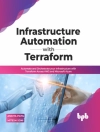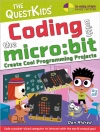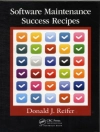This text reviews the fundamental theory and latest methods for including contextual information in fusion process design and implementation. Chapters are contributed by the foremost international experts, spanning numerous developments and applications. The book highlights high- and low-level information fusion problems, performance evaluation under highly demanding conditions, and design principles. A particular focus is placed on approaches that integrate research from different communities, emphasizing the benefit of combining different techniques to overcome the limitations of a single perspective. Features: introduces the terminology and core elements in information fusion and context; presents key themes for context-enhanced information fusion; discusses design issues in developing context-aware fusion systems; provides mathematical grounds for modeling the contextual influences in representative fusion problems; describes the fusion of hard and soft data; reviews a diverse range of applications.
表中的内容
Part I: Foundations .- Context and Fusion: Definitions, Terminology.- Part II: Concepts of Context for Fusion .- Formalization of “Context” for Information Fusion.- Context as an Uncertain Source.- Contextual Tracking Approaches in Information Fusion.- Context Assumptions for Threat Assessment Systems.- Context-Aware Knowledge Fusion for Decision Support.- Part III: Systems Philosophy of Contextual Fusion .- System-Level Use of Contextual Information.- Architectural Aspects for Context Exploitation in Information Fusion.- Middleware for Exchange and validation of context data and information.- Modeling User Behaviors to Enable Context-Aware Proactive Decision Support.- Part IV: Mathematical Characterization of Context .- Supervising the Fusion Process by Context Analysis for Target Tracking.- Context Exploitation for Target Tracking.- Contextual Tracking in Surface Applications: Algorithms and Design Examples.- Context Relevance for Text Analysis and Enhancement for Soft Information Fusion.- Algorithms for Context Learning and Information Representation for Multi-Sensor Teams.- Part V: Context in Hard/Soft Fusion .- Context for Dynamic and Multi-Level Fusion.- Multi-Level Fusion of Hard and Soft Information for Intelligence.- Context-Based Fusion of Physical and Human Data for Level 5 Information Fusion.- Context Understanding from Query-Based Streaming Video.- Part VI: Applications of Context Approaches to Fusion .- The Role of Context in Multiple Sensor Systems for Public Security.- Entity Association Using Context for Wide-Area Motion Imagery Target Tracking.- Ground Target Tracking Applications: Design Examples for Military and Civil Domains.- Context-Based Situation Recognition in Computer Vision Systems.- Data Fusion Enhanced with Context Information for Road Safety Application.- Context in Robotics and Information Fusion.
关于作者
Dr. Lauro Snidaro is an Assistant Professor in the Department of Mathematics and Computer Science at the University of Udine, Italy. Dr. Jesús García is an Associate Professor in the Computer Science and Engineering Department at the Carlos III University of Madrid, Spain. Dr. James Llinas is an Emeritus Professor in the Department of Industrial and Systems Engineering, and in the Department of Electrical Engineering, at the State University of New York at Buffalo, NY, USA. Dr. Erik Blasch is a Principal Scientist at the Air Force Research Laboratory Information Directorate (AFRL/RIEA) in Rome, NY, USA. The editors and contributors have all been leading experts within the international society of information fusion (ISIF).












